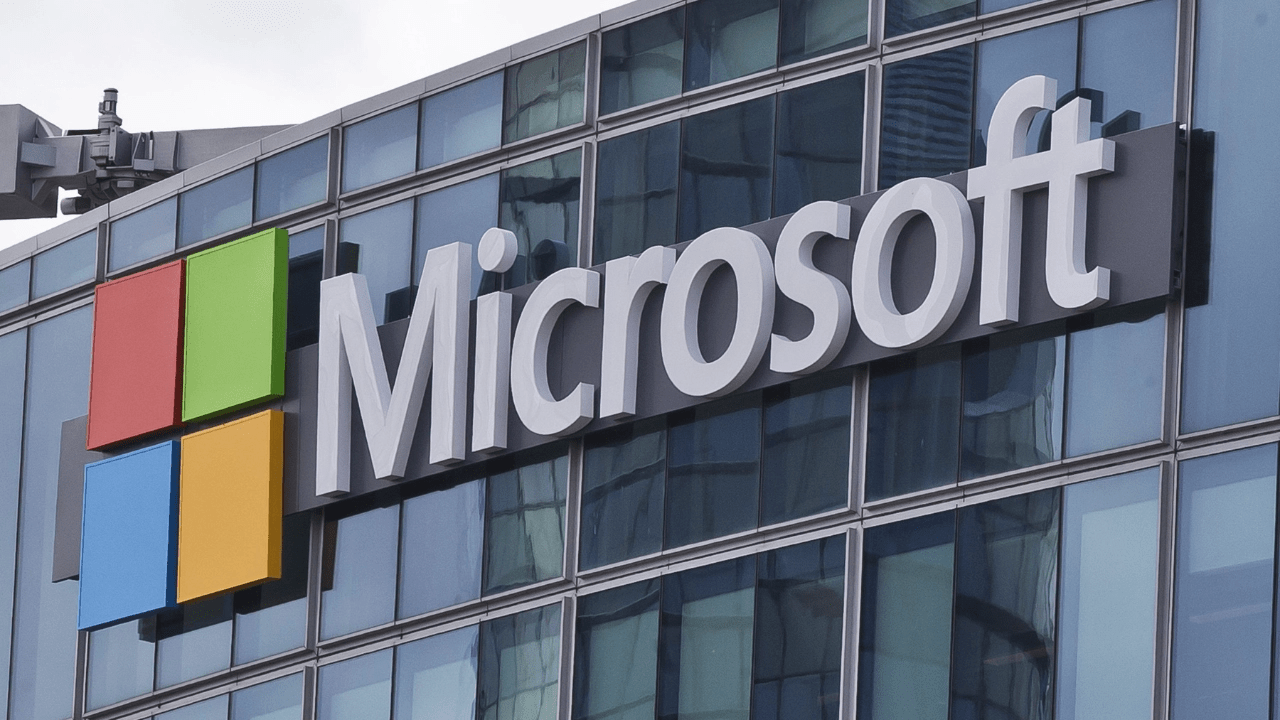First Intel, Now Global Layoffs at Dell of 12500 Workers, All Amid Steep Stock Market Crash: How Far Will It Go?
The industry's persistent struggles with economic challenges, competitive pressures, and rapid technological changes are underscored by the alarming trend of global layoffs.

Dell announced global layoffs of 12,500 workers amid a significant restructuring of its sales division. The American-based computer maker’s objective was to modernize operations to increase its emphasis on artificial intelligence (A.I.). A.I. has finally come for our jobs!
In an internal memo, Dell notified employees of these modifications, which included the establishment of a new AI-focused sales unit and the centralization of sales teams.
Dell has not disclosed the precise number of employees who may be affected; however, reports indicate that layoffs could affect approximately 12,500 individuals, which is approximately 10% of the company’s workforce.
According to the executives, “We are becoming more efficient. We are consolidating management divisions and reassessing our investment priorities.“

Managers Most Impacted by Global Layoffs at Dell
According to the report, numerous employees from Dell’s sales division either experienced layoffs or knew someone who were impacted. The layoffs primarily affected managers and senior managers, some of whom had over twenty years of experience at the company.
“Most of the individuals were managers, directors, and vice presidents.“
Doing so would increase the span of control (the number of individuals managed by one person). Now, each manager is responsible for a minimum of 15 employees.
The tech domain and other domains like operations and marketing have been affected, too.
Another individual stated, “Numerous managers who have been employed for an extended period were terminated.” It serves as a reminder that the amount of effort you invest in this position is irrelevant. You will be eliminated as soon as it benefits their financial performance.
Severance contracts are reportedly being offered to affected employees, which include two months’ wages and an additional week per year of service (capped at a maximum of 26 weeks).
Nevertheless, the loss of stock options and incentives has resulted in dissatisfaction among long-term employees. This comes after recent budget reductions and canceled initiatives.
Does Dell lay off employees every six months?
Dell has decreased its personnel from 130,000 to approximately 120,000 since February 2023. According to the report, one employee stated, “We conduct layoffs every six months. There are no prospects for advancement. For the past nine months, I have been actively seeking employment opportunities beyond Dell.“
The Global Layoffs Tracker for the year is now 100,000+
In July 2024, the technology sector underwent a substantial and alarming increase in layoffs, resulting in the loss of more than 8,000 positions at 34 firms. The industry’s persistent struggles with economic challenges, competitive pressures, and rapid technological changes are underscored by the alarming trend of tech layoffs.

Intel: After a disastrous second quarter, Intel intends to reduce its personnel by approximately 15% to reduce costs. The company’s revenue for the three months ending June 29 remained at approximately $12.8 billion, while net income plummeted by 85% to $83 million.
This prompted CEO Pat Gelsinger to convene a company-wide meeting to announce that 15,000 employees would be laid off. In an email to staff, Gelsinger stated, “This is an incredibly difficult day for Intel as we are implementing some of the most significant changes in our company’s history.“
He continued, “Our revenues have not increased as anticipated, and we have not yet completely capitalized on powerful trends, such as A.I. Our margins are inadequate, and our expenses are excessive. Given the financial results and outlook for the second half of 2024, which are more challenging than previously anticipated, we must take more bold actions to resolve both.”
Tesla: Musk announced in an internal memo in April that Tesla would reduce its global workforce by over 10%, which affected over 10,000 employees. The layoffs affected over 6,000 individuals in California and Texas, with an additional 2,700 employees at Tesla’s gigafactory being laid off.
A week later, Tesla terminated its team responsible for the development of Superchargers, a decision that impacted approximately 500 individuals.
Toshiba: In an effort to expedite its restructuring efforts under new ownership, Toshiba declared that it would eliminate up to 4,000 domestic positions. Toshiba has reduced its local workforce by 6% as a result of these layoffs.
Cisco: Cisco announced the decision to reduce its workforce by 4,200 from 84,900 to concentrate on more profitable segments of its business, such as A.I. and security. The organization’s most recent significant employment reduction occurred in February 2024.
Cisco’s sales of telecommunications equipment have been adversely affected by the delays experienced by telcos in the deployment of equipment that they have already acquired. On the other hand, Cisco’s business in A.I. is expanding, with sales in the billions.
This was before the company announced its recent partnership with Nvidia, which is profiting from the sale of processors for A.I. applications.
Microsoft: Microsoft reduced its staff by approximately 1,000 in the Azure ‘moonshots’ and mixed reality divisions in June. Affected employees have reported that the layoffs primarily involved positions related to product and product management.

UKG: UKG reduced its workforce by 2,200 employees. UKG, a software company headquartered in Massachusetts, has announced substantial employment cuts this month, resulting in a 14% reduction in its workforce, or approximately 2,200 employees. The organization asserted that this reduction is intended to concentrate on critical growth sectors in order to facilitate its long-term strategic objectives.
Intuit Inc.: Intuit Inc., a financial management software company headquartered in California, has disclosed its intention to eliminate 1,800 positions, which accounts for approximately 10% of its workforce. This is the second-largest layoff in the technology industry for July’24.
Dyson: The UK-based appliance manufacturer Dyson will reduce its workforce in the U.K. by approximately 1,000 positions, which will affect more than 25% of its domestic staff. The decision was announced by CEO Hanno Kirner due to the unprecedented quick advancement of technology and the intense competition.
Dyson has pledged to provide assistance to those affected, but the total number of global layoffs remains undisclosed as assessments continue. The company has a global workforce of approximately 15,000.
Kaspersky: Kaspersky, a Russian cybersecurity firm, will cease operations in the United States and terminate its employees in response to a prohibition on its software by the United States government. The ban, which is a result of security concerns regarding the company’s Russian base, has rendered Kaspersky’s U.S. operations “unviable,” affecting around 50 employees.
Paytm: Paytm decided to reduce costs by laying off as many as 6,500 employees. A move that saved the company INR 400-500 crore, Paytm reduced its workforce by 15-20%. In 2023, the company had a robust workforce, with an average of 32,798 employees on payroll and an average cost per employee of INR 7.87 lakh.

Koo: Koo, an Indian microblogging platform, has suspended operations as a result of the failure of acquisition negotiations with Dailyhunt. As of September 2021, the organization employed approximately 200 employees.
Unacademy: Unacademy, a leading Indian ed-tech company, announced layoffs that affected approximately 250 employees in July. The layoffs affected 100 employees in marketing, business, and product roles, as well as 150 employees in sales positions.
It also revoked all appraisals for its staff, a decision announced by its CEO, who received a lot of flak online for doing so while wearing a USD 400 Burberry T-shirt himself.
WayCool: WayCool, an agritech company based in Chennai, laid off over 200 employees in July, signaling its third round of layoffs this year. The objective of the employment cuts is to reduce financial losses and streamline operations in the face of persistent funding challenges.
PocketFM: PocketFM, an audio series platform headquartered in Bengaluru, laid off approximately 200 writers, with the majority of the layoffs affecting its U.S. team.
Bungie: Bungie, a game development studio owned by Sony, has announced a significant workforce reduction, laying off 220 positions or 17% of its staff as a result of increasing development costs and economic challenges.
This follows a prior reduction of 100 positions in October 2023, resulting in a 40% workforce reduction over the past year.
Humble Games: Humble Games, a division of Ziff Davis, terminated its entire workforce of 36 employees. After releasing nearly 50 indie titles, the company verified that it would remain operational despite rumors of its closure.
The tech sector is experiencing a period of significant transformation and uncertainty, as evidenced by the global impact of these layoffs.
Why are tech companies laying off an excessive number of employees when profits are at an all-time high?
The list encompasses layoffs that have arisen as a consequence of the closure of companies, as well as nearly all of the technology titans, particularly those that demonstrated exceptional financial performance in their most recent quarterly report.
- Five days prior to reporting a 17.6% increase in revenue to $62.02 billion, Microsoft laid off 1,900 employees.
- Google laid off over ~1000 workers shortly before reporting a 13% increase in revenue to $86.31 billion.
- Amazon, despite a 14% increase in revenue to $169.96 billion, sent home a thousand employees.
- Meta, despite a 25% increase in revenue to $40.11 billion, sent pink slips to several dozen employees.
- SAP terminated 8,000 employees or 7% of the workforce, after recording a 5% increase in revenue to $8.47 billion.
- Snap, the parent company of Snapchat, terminated 540 employees (10% of the company’s workforce, despite a 5% increase in revenue to $1.36 billion).
- PayPal terminated 2,500 employees (9% of the workforce, despite a 9% increase in revenue to $8.03 billion)
Additional rounds of layoffs were documented in smaller organizations that recorded high profits. For example, Zoom terminated 150 employees (2% of its workforce), Discord terminated 170 employees (17%), TikTok terminated 60, eBay terminated 1,000 employees (9%).

These rounds are, for the most part, not as extensive as the significant waves of layoffs of 2022 and 2023; however, they are still significant and particularly conspicuous in light of the contrast between the current economic situation and last year.
Last year, the financial performance of nearly all technology companies was significantly impacted by the global economic crisis and the apprehension of widespread inflation.
However, in the past year, the companies implemented substantial efficiency initiatives. Mark Zuckerberg designated 2023 as “the year of efficiency” in Meta, reduced expenditures, terminated a substantial number of employees, and resumed the growth of both revenues and profits.
The Big Five (Microsoft, Google, Amazon, Apple, and Meta) generated a total of $1.63 trillion in their most recent fiscal year, which is 81% higher than the previous year. As a result, investors rewarded them appropriately, and the companies’ aggregate value increased by $3.5 trillion.

Therefore, why are employees continuing to be terminated despite the fact that all available data suggests that it is time to resume hiring or, at the very least, to cease the reductions?
One explanation is the residual effects of the extensive recruitment efforts that occurred during the pandemic. The New York Times reports that the number of employees at the Big Five increased by over 900,000 from the end of 2019 until the commencement of the significant bouts of layoffs.
Approximately 112,000 positions were eliminated by the companies over the past year and a half as a result of the economic recovery. Nevertheless, they continue to employ 2.16 million individuals, which is a 71% increase from the pre-pandemic level.
“Technology companies are still trying to reduce the extra weight they put on during the pandemic, given that high interest rates and the negative trend in the technology sector have lasted longer than expected,” Restructuring.fyi founder Roger Lee stated to Bloomberg.
“However, the current rounds of layoffs are often smaller and more focused than those of 2023.“
In other words, whereas companies implemented a form of panic layoffs last year with the intention of reducing expenses at all costs, the current approach is more deliberate and is focused on business segments and divisions that are not performing well.
Tim Herbert, vice president of research at CompTIA, who analyzes job advertisements to monitor employment trends in the technology sector, stated to the New York Times, “We go through cycles where you see an intense focus on innovation, and then the pendulum swings and there’s an intense focus on the bottom line.“
“However, when I hear that Amazon is reducing the number of Alexa employees or that Google is reducing the Pixel Phone team, it indicates that the company is placing a greater emphasis on profit margins. They reduce expenditures whenever feasible and reallocate assets.”
An additional explanation is the shift in emphasis of numerous organizations toward artificial intelligence (A.I.)-based developments or the transition to AI-based tools. In this context, it is feasible that not all layoffs will result in a decrease in employment opportunities, and that the organization may substitute employees with specific competencies with those with alternative abilities.
The number of open jobs that are related to A.I. or require skills in the field increased from approximately 2,000 in December 2023 to 17,479 in January 2024, according to an analysis by CompTIA. The unemployment rate in the sector is 3.3%, which is lower than the 3.7% rate in the U.S. labor market, and the number of job vacancies in January increased by 18,000 compared to December.
In addition, there are instances in which companies opt to invest in the development and implementation of A.I. capabilities rather than employing thousands of employees every quarter, resulting in job cuts as a result of the transition to the use of A.I.
This trend is evident in the comments made by Meta CEO Mark Zuckerberg during a discussion with analysts following the publication of the company’s quarterly report last week. He stated that Meta terminated employees in January to reduce expenses and “to enable the allocation of resources toward a long-term and ambitious A.I. strategy.” He further stated, “We are more efficient as a lean organization.”
CEO of staffing firm Insight Global Bert Bean, stated to Bloomberg, “I believe that the majority of the layoffs have already occurred and that companies are beginning to recover.”
“However, the situation remains highly uncertain. The market will continue to behave in this manner for approximately two more quarters or until the Federal Reserve reduces the interest rate once more.“
Change is the Only Constant
Perhaps the path to a long, secure career that was once thought to be a position with a tech giant is no longer as promising after a thriving 30 years. A.I. has transformed the industry.
Nvidia CEO Jensen Huang stated at an A.I. conference in 2024 that “Over the last 10-15 years, almost everybody who sits on a stage like this would tell you that it is crucial that your kids learn computer science — everybody should learn how to program.”
“In reality, it is nearly identical to the opposite. It is our responsibility to develop computational technology that eliminates the need for programming and ensures that the programming language is human-readable. Currently, every individual on Earth is a programmer. This is the marvel of A.I.“
Although Huang had a product to promote, the underlying message is pertinent: Many companies are automating through A.I., which turns out to be more cost-effective than having employees in the long run.

The good news is that while A.I. is improving efficiency in fields such as software development and I.T. operations, it encounters challenges with tasks that necessitate manual dexterity and human intuition.
It is intriguing that occupations that are predicated on human empathy and physical abilities, including healthcare, education, skilled trades, and creative professions, are the least susceptible to A.I.’s influence.
It is understandable that a significant number of individuals are beginning to inquire about the safety of certain professions and the potential risks associated with them. However, the function of A.I. should be viewed as more of a collaborator than a replacement as it matures.
Remember – A.I. to us 20-30 year olds is what internet was to our parents.
Internet also took many jobs, but it also created so many. Expect the same from A.I.
Therefore, in order to guarantee that the workforce is compatible with A.I.’s capabilities, organizations must allocate resources to employee training in AI-related skills. This method protects employment opportunities and advances the workforce toward a more sophisticated, AI-powered future in which technology and human talent collaborate to enhance efficiency and innovation.
Upskilling in artificial intelligence may be one potential solution
The global technology sector is confronted with a paradox: over 240,000 job losses worldwide in 2023 and 124,000+ in 2024 so far, which coincide with substantial investments in A.I., as a consequence of a 50% increase in tech layoffs. This situation underscored the intricate relationship between job insecurity and technological advancement, casting a shadow over the future of employment.
The demand for workers with generative A.I. skills is on the rise, as evidenced by the substantial rise in job postings that include the term “GenAI.”
This trend indicates a transition to a job market that is more AI-integrated, necessitating that professionals upskill themselves and acquire relevant skills in order to succeed in a changing employment landscape.




